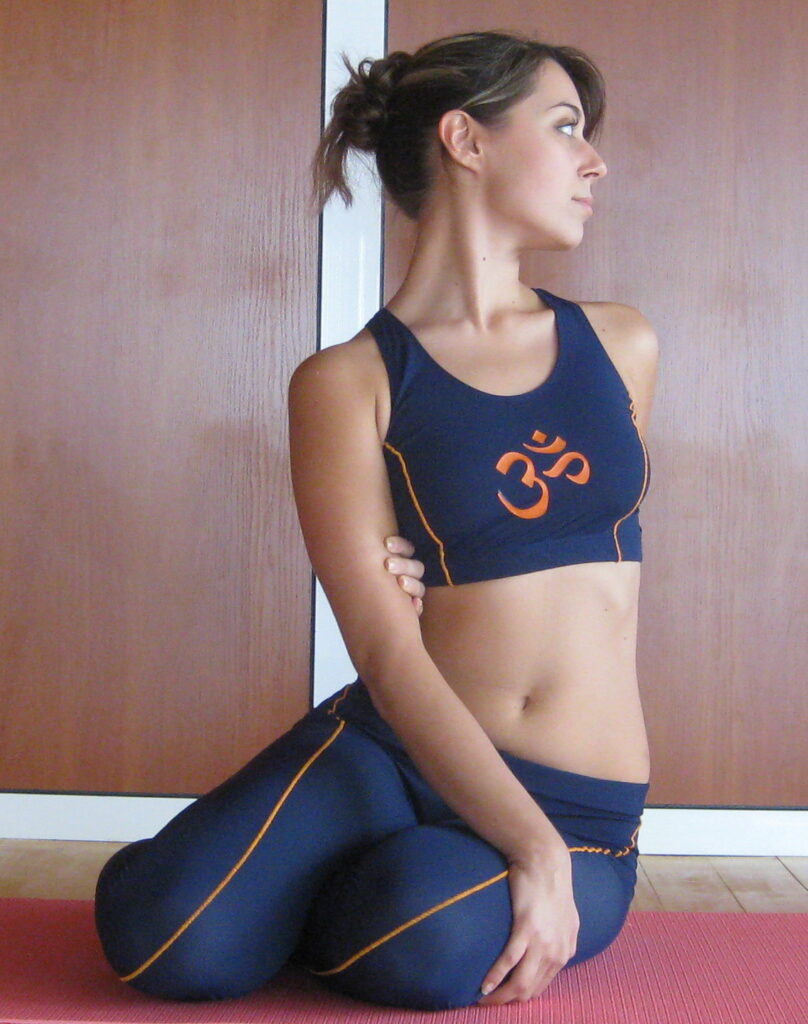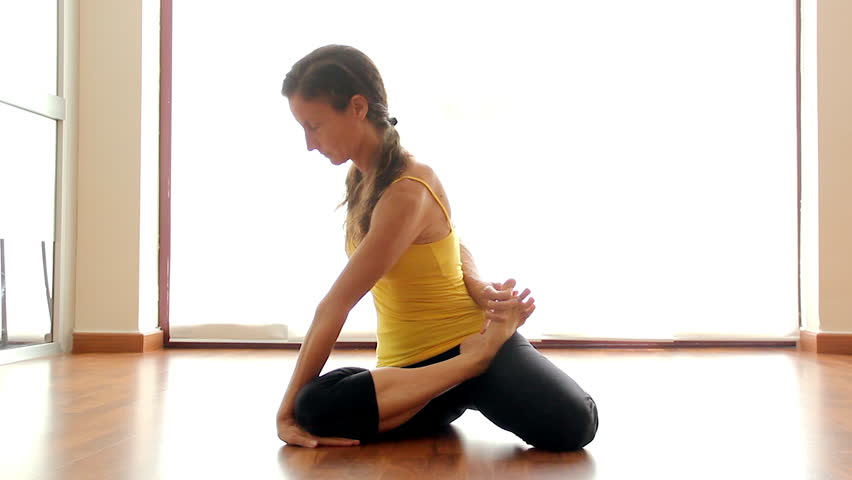Bharadvajasana Massages the Hip and Abdominal Organs
We put on weight as we fail to burn calories. We avoid burning calories as we are under the impression that exercising with its huffing and puffing is the only way to burn calories. Another dampener is the notion that for exercise, you need to visit the gym where you have to sweat it out.
But yoga shows another way out where this need not be the case. The Bharadvajasana pose of yoga addresses the issue that most of us grapple with – how to keep our waist shipshape without the pains of huffing, puffing and sweating. This yoga pose is basically a hip twist in a sitting position and so is one of the easier and more useful of the yoga asanas (poses).
How to Do the Bharadvajasana (Hip Twist)

Begin by sitting on the carpet and placing your legs in a spread-eagled position. Your arms are by your side, and to support yourself on both sides your palms are placed flat on the floor. Inhale and exhale normally until you feel comfortable and ready for the next move.
Fold your legs by bending your knees and bring them near your pelvis. Fold both your legs in the same direction, either right or left. If your legs are towards the left (i.e. your soles are towards your left side), move your posture so that you rest on your right buttock while both your legs are folded towards the left.
Shift the sole of your right leg so that it touches the thigh of your left leg. You can support these movements with your palms that are resting on the floor.
After a deep inhalation, exhale and turn your shoulders towards your right. Shift your left arm from the floor and place it on your right knee. Your right arm still rests on the floor to support you but you can move it further towards the right with every move, while dragging it on the floor.
Remain at this posture and then inhale deeply again and exhale and move your shoulders further to the right as much as you can without feeling any pain. In repeated stages, keep doing this further movement towards your right until you are comfortable. Pause for some time at every move and inhale and exhale once again before trying to move your shoulders once again. This posture gives the maximum possible twist to your hip.
For a further stretch, an additional move at this posture can be that of placing your right hand behind your back. You can even try to hold the elbow of your left hand with your right hand. Do remember that these last two moves should not be done by pregnant women.
For stretching to the other side you may repeat all the above steps by turning to your left buttock and twisting in your left direction.
How to Come Out of the Bharadvajasana (Hip Twist)
Begin by relaxing your shoulders and placing both your hands on the floor. Now gradually relax the twist on your hip and move it to a position where it is once again straight. As your hands are always placed on the mat or your thigh while you remain seated when doing this pose, it is easy get into and exit this posture. You do not have to worry of losing your balance.
Benefits of the Bharadvajasana (Hip Twist)
The Bharadvajasana pose strengthens your hip and lower back. It also massages your abdominal organs and your hip. As your lower back is subject to regulated twisting, you can get relief from backaches and sciatica. As the abdominal section is also twisted, the abdominal organs function better and secrete better. This pose can help in reducing constipation. Your shoulders and spine also benefit from this exercise.
This pose is beneficial in the second trimester of pregnancy for strengthening the lower back of expectant mothers.
Except for expectant mothers, you may do this posture along along with other yoga exercises like the Ardha Chandrasana to resist ailments like osteoporosis and slipped disc, the Mandukasana to resist diabetes, and the Halasana to exercise your entire body with a single posture.
A Word of Caution
Patients suffering from diarrhea should avoid this posture, as should patients with high or low blood pressure. During menstruation or in advanced stages of pregnancy beyond the second trimester, avoid doing this pose.
Even those expectant mothers in their second trimester of pregnancy can do this exercise only if they are permitted by their gynecologist. They can do this pose only under the guidance and in the presence of a qualified yoga therapist. Otherwise too, before you start doing this exercise, seek your doctor’s clearance and do it under the guidance of your yoga instructor.
